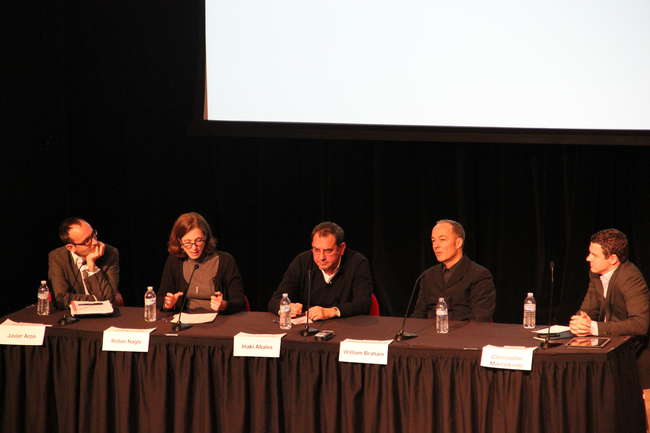
Have architects been spending too much time designing buildings? That was the paradoxical question at the heart of a symposium sponsored by the Architectural League of New York on the boom years of the early 21st century. The February 22 conference, called “The City that Never Was: Urbanization After The Bubble,” was about the buildings that resulted from the mismatch “between the flows of capital and the needs of the real economy," in the words of panelist James von Klemperer, a design partner at Kohn Pedersen Fox (KPF)
Though the symposium’s setting was SoHo, much of the focus was Spain, where overbuilding has produced at least 15 “ghost airports” and a 26,000-seat polo stadium in a city of 22,000 people with no polo tradition, according to Javier Arpa, an architect and curator who helped organize the day-long conference. Arpa was joined by Llàtzer Moix, a Barcelona-based critic, who lamented the countless Spanish projects motivated by the greed of developers and banks (he called the easy credit “like petrol in the hands of a pyromaniac”), enabled by the egos of star-architects, which have left Spain over-built and financially hobbled.
It took von Klemperer, who spoke at the end of the day, to defend the idea of building—and building big. Among KPF’s current projects is the master plan of New York’s Hudson Yards development and the design of two of its office towers. “We see the industrial scars of rail yards that need to be covered,” said von Klemperer. And he endorsed plans (championed by Amanda Burden, Chair of the New York City Planning Commission and Director of the Department of City Planning, who was in the audience) to rezone parts of Manhattan to allow increased density. Von Klemperer disputed the idea that developers, or governments, should be focused only on current needs; he pointed to the Manhattan grid, laid out long before most of the island was settled, as prescient.
But the mood of many of the panelists—that architects should be focused on non-building solutions—seemed to echo recent developments around the country:
- Last week, the Museum of Modern Art’s Department of Architecture and Design and MoMA/P.S.1 announced a call for ideas (entitled Expo 1: New York) for improving the Rockaways, a beach community devastated by Sandy. The competition brief, and the requirement that all entries be in video form, ensure the focus will not be on buildings so much as on ideas.
- New York City’s Storefront for Art and Architecture has gone further than MoMA, organizing a Competition of Competitions. According to Storefront director Eva Franch i Gilabert, traditional architecture competitions are often too narrow, in that they ask architects to answer questions someone else has asked. This competition invites architects to come up with the questions. One winner will actually get to organize a competition, with Storefront’s help, in 2014.
- Of the 20 finalists in the Mayor’s Challenge—New York City Mayor Michael Bloomberg’s invitation to cities across the U.S. to propose ideas for improving urban life—not one has architecture as its focus.



Post a comment to this article
Report Abusive Comment